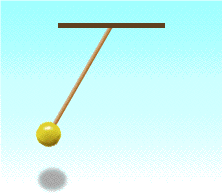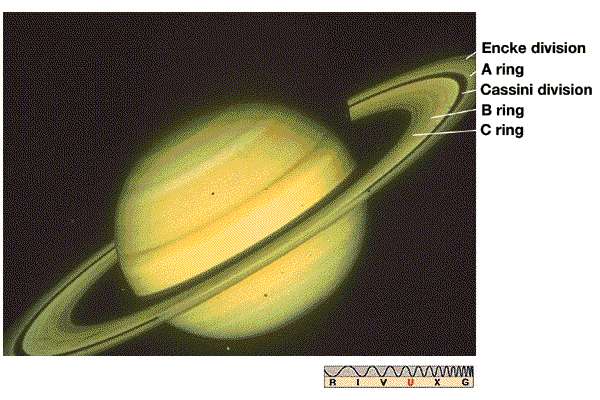Resonances and Forced Oscillations and Vibrations
Pendula and Vibrations: To the right is
shown a pendulum. The period of swing for a pendulum depends only
on its length (for small swings)!!! The period of swing is
P = 2 (L/1 meter)1/2 seconds
where P stands for the period of swing and
L is the length of the pendulum.
Simple Harmonic Oscillators: A mass attached
to a spring is pulled downward by gravity. It assume as an
equilibrium stretch such that its restoring spring force (a Hooke's Law
force, F = -Kx) balances the downward pull of gravity. If the mass is
disturbed it oscillates about this equilibrium position with period
P = 6.3 (M/K)1/2
All mechanical systems made of elastic
materials when struck, ring like a bell. The exact frequency with which they
ring, depnds on their structure. Generally small objects ring faster than
large objects and dense objects ring faster than less dense objects.
Even stars ring; our Sun is observed to
oscillate
in over 1 million different modes, four types are shown below:
Resonant effects arise when a forcing
frequency excites resonance frequencies in say a bridge, pendulum,
spring, or any mechanical system. Driving at these special frequencies
allows large amounts of energy to be transferred compared to driving
off resonance.
|
Free Oscillators

Simple harmonic oscillator oscillates with
frequency f = (K/M)1/2, where K is the spring constant defined
by the Hooke's Law force = -Kx, and
M is the mass
of the suspended weight

Simple Pendulum
oscillates with natural period P = 2 (L/1 meter)1/2
seconds.
|













